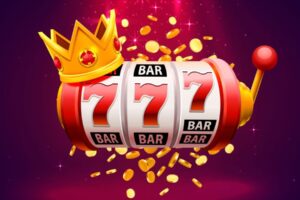An RTP percentage measures how much money players can expect to win over the long term from a specific slot game. For example, if a slot has an RTP of 96%, it means that for every $100 wagered, the game will return $96 to players in the long run. It’s important to note that RTP is calculated over millions of spins and doesn’t guarantee individual session outcomes. When you try playing slots, you might experience results that differ significantly from the stated RTP in the short term.
How does RTP work?
To understand RTP better, let’s break down its components:
- Theoretical vs. Actual RTP – The RTP advertised by game providers is theoretical, based on simulations and mathematical models. Actual RTP can vary in practice, especially over shorter periods.
- House edge – The difference between 100% and the RTP represents the edge. For instance, a slot with 96% RTP has a 4% house edge, which is the casino’s theoretical profit margin.
- Long-term perspective – RTP is calculated over millions of spins, meaning short-term results can deviate significantly from the expected return.
- Game volatility – While RTP indicates long-term payback, volatility describes the frequency and size of wins. High-volatility games may have long, dry spells but larger potential payouts, while low-volatility games offer more frequent, smaller wins.
Why RTP matters?
- Informed decision making – Knowing a game’s RTP helps you choose slots that offer better long-term value for your money.
- Bankroll management – Higher RTP games generally allow your bankroll to last longer, providing more entertainment value.
- Expectation setting – Understanding RTP helps set realistic expectations about potential wins and losses.
- Comparing games – RTP is a standardized metric to compare different slots objectively.
Factors influencing RTP
Several factors can affect a slot’s RTP:
- Game design – More complex games with numerous features might have lower RTPs to balance development costs.
- Jackpots – Progressive jackpot slots often have lower base RTPs because a portion of each bet contributes to the growing jackpot.
- Regulations – Different jurisdictions may have minimum RTP requirements for online slots.
- Casino settings – Some games allow operators to choose from a range of RTP settings so that the same game might have different RTPs at different casinos.
RTP ranges in online slots
When you ทดลองเล่นสล็อต, you’ll encounter various RTP ranges:
- Low RTP (below 94%) – These slots are less favorable for players and should generally be avoided.
- Average RTP (94% – 96%) – Most online slots fall within this range, offering a balance between player returns and casino profitability.
- High RTP (Above 96%) – These games offer the best theoretical value for players. Some slots even boast RTPs above 99%, though they’re relatively rare.
Finding RTP information
To make informed decisions when you try playing slots, it’s essential to know where to find RTP information:
- Game info section – Most slots have an information or help section that displays the RTP.
- Casino websites – Reputable online casinos often list RTPs for their games.
- Game developer websites – Slot providers usually publish RTP information for their games.
- Third-party review sites – Many gambling review sites compile and verify RTP data for various slots.
The house always has an edge in casino games, including slots. RTP helps you choose games with better long-term value, but playing responsibly and within your means is crucial. Combining RTP knowledge with responsible gaming practices can enhance your online slot experience, extend your playtime, and make more informed choices about which games to play.













